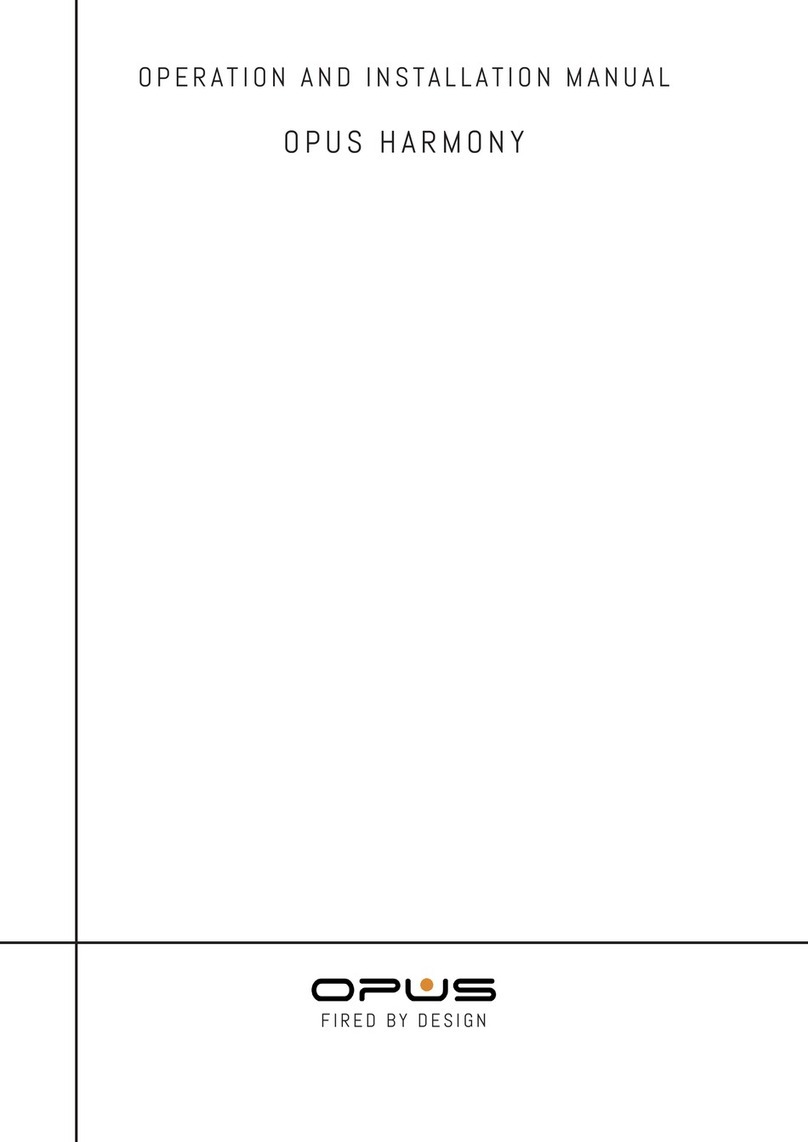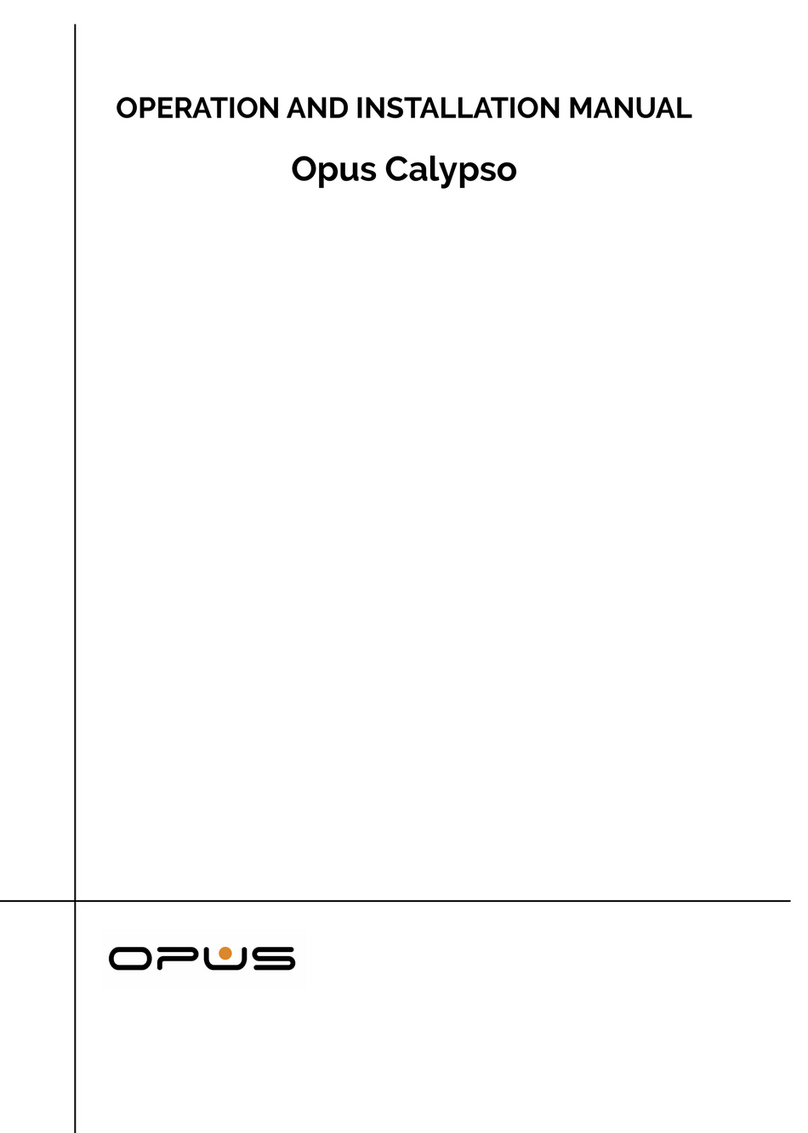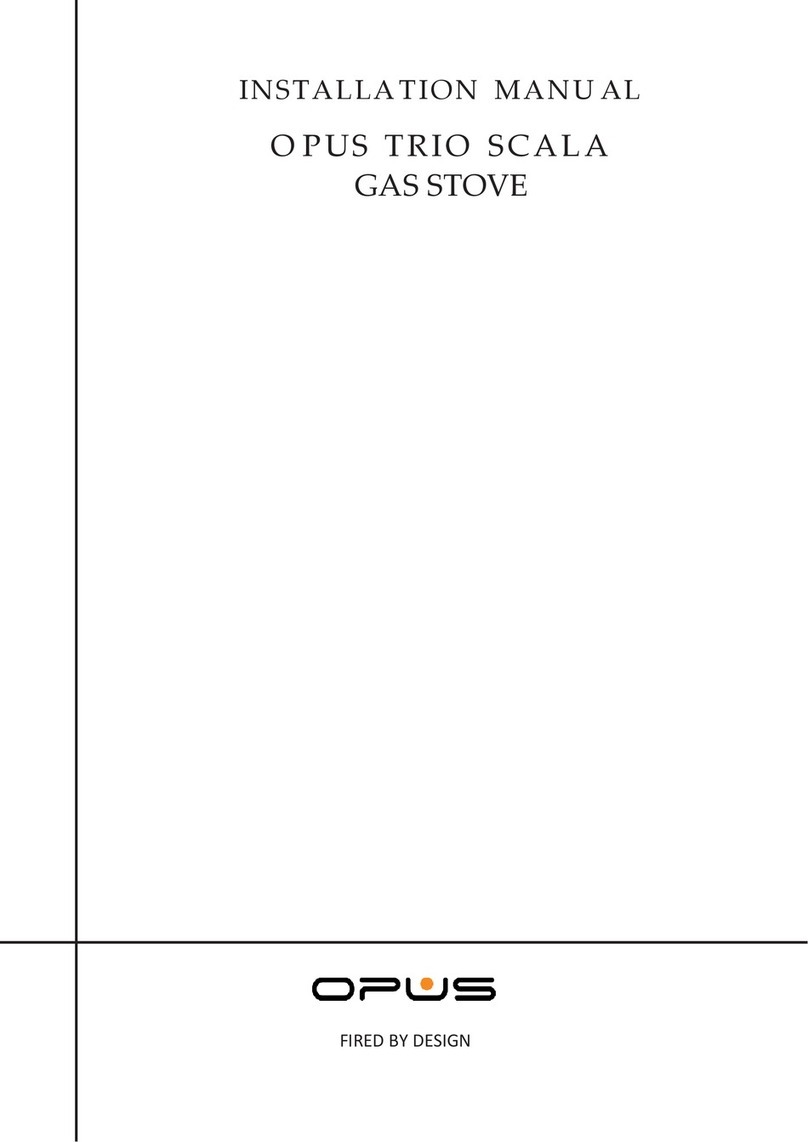9
6.1. Starting the stove
Please pay attention to the minimum space between the stove and flammable objects
when lighting a fire.
1. Primary and secondary controls should be fully open.
If the flue pipe has a flue damper it should also be fully open.
2. Remove enough ash from the grate to let air through but leave some of the ash there.
Put 2-3 firelighters in the centre of the firebox and put on the firewood.
3. Light the firelighters and leave the door slightly open as it prevents condensation on the
cold glass. Do not leave the stove unattended when the door is ajar.
4. After approximately 5 to 10 minutes, when the fire is burning fully, carefully open the
door, put 1 to 2 pieces of the wood into the firebox, and then close the door.
5. When all the fuel is properly burning, and the working temperature of the stove is
achieved (after approximately 20-30 minutes), gradually move the primary air regulator
backwards, but ensure that there is still a visible flame.
When the stove is up to temperature and the fire burning well then the primary regulator
can be completely closed.
6. The door should only be opened again when the fuel has burned right down and you
want to put new fuel in.
If there is insufficient burning material in the firebed to light a new fuel charge, excessive
smoke emission can occur. Refuelling must be carried out onto a sufficient quantity of
glowing embers and ash that the new fuel charge will ignite in a reasonable period. If there
are too few embers in the fire bed, add suitable kindling to prevent excessive smoke.
It is recommended that the secondary air regulator is kept fully open in order for the “glass
cleaning” to be most efficient, and to avoid the glass “fogging”.
7. Use the amount of fuel you place in the stove to regulate the room temperature.
To burn at the nominal output, the stove requires refueling every 45-50mins with
approximately 1.1kg of wood logs.
8. When adding larger wood it is good practice to put in a couple of smaller bits first as the
larger logs then light faster, so producing less smoke. When adding wood, the primary air
control must always be open, and left open until the new logs have caught fire. At that
point close the primary control and leave the secondary air to facilitate the combustion.
THE STOVE SHOULD NEVER BE FILLED EXCESSIVELY. EXCESSIVE AMOUNTS OF
WOOD OR AIR FOR COMBUSTION CAN CAUSE OVERHEATING AND DAMAGE THE
STOVE.
































